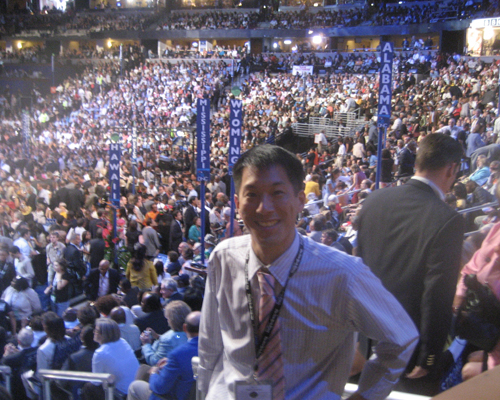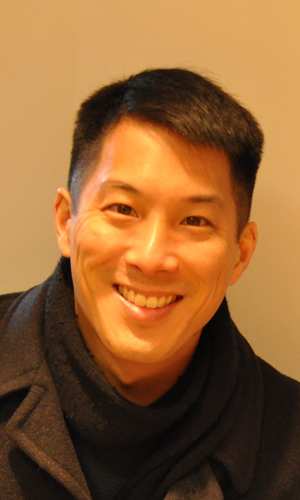 Linsanity is alive and well tonight as Jeremy Lin gave New York a nice Valentine's Day present: a last-second three-pointer to nail the Knicks' win over the Raptors.
Linsanity is alive and well tonight as Jeremy Lin gave New York a nice Valentine's Day present: a last-second three-pointer to nail the Knicks' win over the Raptors.
As journalists are trying to capture Lin's rise to popularity in the NBA, some might look to Poynter for tips for how to cover the phenomenon, potential pits to watch for and story ideas to consider. Naturally the organization offered some tips for covering the Linsanity phenomenom. In trying to capture the uniqueness of Lin's story, Poynter urges journalists to avoid falling into stereotypes when covering an Asian American Harvard graduate who is a "devout Christian."
When you think of “Ivy League grad,” what stereotypes come to mind? Brainy, elitist, arrogant? “Asian American man”– inscrutable, passive, reserved? “Devout Christian” — judgmental, moralistic, holier than thou?
There's nothing like a "judgmental, moralistic, holier than thou" description to hammer down what journalists think of when they think "devout Christian." Thankfully, though, the author pointed journalists to Michael Luo's first-person narrative in the New York Times, where Luo compared his own background as an Asian American Christian who went to Harvard to give examples for why the basketball star has particularly resonated with so many people. Luo isn't usually in first-person mode. He is an investigative reporter for the Times who has also worked at the Associated Press, Newsday and The Los Angeles Times. We looked at the piece a few days ago and saw a few pieces of background on his Twitter feed, but we thought it would be interesting to talk directly to Luo about religion and ethnicity, why he felt vulnerable writing his piece and the state of religion and the media.
You have gotten quite a bit of response to your first-person piece on Jeremy Lin. Do you think the media misses potential distinctions when covering religion and ethnicity?
Yes, the response on Twitter, Facebook and in reader emails has been pretty stunning. More than 1,500 people tweeted the story link, according to Topsy.com, the social media search engine. At one point over the weekend, it was the most tweeted story on nytimes.com, other than our Whitney Houston obituary. All this for a little essay than ran in the back of the Sports section in the print edition.
In response to your question, I grappled a good bit with what exactly I could say in my essay that was new and potentially instructive about Jeremy Lin. I thought about just explaining my emotional connection as an Asian American, which is arguably applicable to a broader swathe of people. But I realized writing about him as an Asian American Christian, specifically, could be illuminating, because it is a sub-category on the religious continuum that is not widely known. It is also a huge part of Lin’s identity. Understanding that he is an Asian American Christian, specifically, is important to understanding him, I felt. Of course, that is not what the entire piece was about. I was trying to explain this welter of emotions inside of me that he evokes and this multi-layered sense of connection.
Certainly, there is a danger in lumping all theologically conservative Christians, or “evangelicals,” together, because there are distinct differences in the histories, cultural milieus and general orientations of white, black, Asian and Latino evangelicals. Has the media papered over these distinctions? Sure. Part of it is our under-coverage of religion in general. The other part of it is just getting out there and covering these communities in thoughtful, in-depth ways.
When you tweeted that it was a vulnerable column, did you feel like you were risking something by writing about yourself? How do you think reporters who are open about their faith are perceived internally at their media outlets or externally as a reporter?
As a journalist, my instinct, in general, is to shy away from making myself the story in any way. The risk in identifying myself, as I did in the article, as one of these “every-Sunday-worshiping, try-to-read-the Bible-and-pray” types is on two levels. There’s the personal risk in terms of what others might think of me, whether they will instinctively try to put me in a certain box, or ascribe certain stereotypes onto me, which no one likes. There’s also the journalistic risk, in terms of whether it might affect my ability to do my job and be credible as an objective journalist. I weighed the latter a good bit with Joe Sexton, the sports editor, and Phi Corbett, the Times’ standards editor. Both thought that the piece did not cross any inappropriate boundaries.
A top-tier newspaper is like any other institution filled with a lot of highly educated people, many from elite schools. Religious belief is not the rule, but I would contend that there are more committed Christians and others who take their faiths seriously at the New York Times than you might think. I’m definitely not the only one. In terms of how reporters who are open about their faiths are perceived, I don’t know exactly what people think of me privately. Have there been times, with a comment here, or a remark there, when I have felt uncomfortable as a Christian? Yes, certainly. But I can also say that it has never been held against me at the newspaper. In fact, I think higher-ups at the paper consider it an asset, just as it’s an asset to have people of varying racial, ethnic and socio-economic backgrounds and life experiences at the paper.
You wrote, "I like to think of my approach to faith as nuanced and not fitting easily into anyone’s standard boxes." Do you think reporters understand how to write about faith in a nuanced way?
I think newspapers and the media in general could do a better job on this front. We tend to write about religion from the perspective of conflict. It’s a general journalistic trope, not just in religious coverage. I think we could do a better job seeking out stories about how faith plays out in people’s everyday lives. That’s where nuance comes out.
In comparing Lin to Tim Tebow, you suggest that Asian American Christians are rarely culture warriors. If someone like Tebow might be considered part of the culture war, is that due to the way he acts out his faith or perhaps the way he's portrayed by the media? Or maybe both?
I think part of it has to do with him and part of it—maybe even much of it—has nothing to do with him at all. Yes, as you pointed out, he did appear in a Focus on the Family television commercial. And, yes, there’s the way he “Tebows” and wears the eye-black with the Bible verses. He also has this in-your-face, warrior persona, not necessarily specific to the culture wars but just as a football player. But I think the manner in which Tebow has become such a polarizing figure is also, in large measure, because of how he has come to represent the stereotype of all evangelicals—specifically white evangelicals who are part of the so-called religious right. That’s partly the media’s fault. But that’s also partly just the way the word, “evangelical,” has morphed since the 1980s into a political term, synonymous with Christian conservatism, as opposed to a theological one, which is how it really began.
You are not on the religion beat per se, but your stories often overlap with religion. How do you decide when to follow a religion angle in an otherwise more general story?
I work in the investigations cluster at the New York Times, so I don’t really cover religion as part of my normal job at all these days. I spent the last year doing a series of investigative stories on gaps in gun laws. And now I’m working on political investigative stories. I did briefly cover religion for the metro desk several years ago. And I have been sometimes asked to lend a hand on certain religion stories, particularly when it comes to coverage of evangelicals. But I’ve also just stumbled upon religion stories when I’ve covered other beats, just because they’re there for the taking. When I was doing a rotation in our Baghdad bureau back in 2006, I did an article on the plight of Iraqi Christians. When I covered politics, I inevitably found myself doing various stories relating to religion, like one I did on Hillary Clinton’s faith. Reporters are always looking for something new and fresh to write about. Sometimes the most fertile ground that has not been trodden upon relates to religion.

